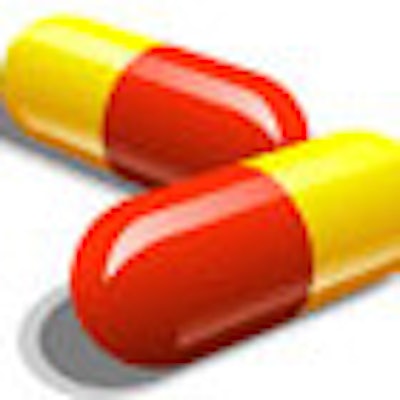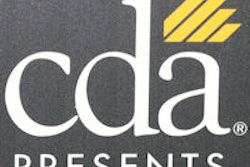
Recent reports about the growing number of people who are resorting to emergency rooms (ERs) for relief from painful dental problems has put a spotlight on the issue of prescription painkiller abuse. Are dentists overprescribing them too?
As the economic recession persists, fewer employers are offering dental insurance, and many states have cut or eliminated adult dental benefits for Medicaid programs. As a result, more people are turning up at ERs with toothaches, abscesses, and avoidable dental problems, according to a report issued in February by the Pew Center on the States.
A South Carolina ER physician said he sees about 10 patients a week complaining of toothaches, calling them "the bane of our existence," according to an April 30 story in the New York Times.
ER physicians -- lacking the training, tools or time to treat such patients -- almost always simply prescribe painkillers to send them on their way, according to Christopher Okunseri, DDS, a practicing dentist and an associate professor of public health at the Marquette University School of Dentistry in Milwaukee.
From 1997 to 2007, analgesics were prescribed in three of four ER visits for dental complaints in the U.S., according to an analysis of the National Hospital Ambulatory Medical Care Survey by Dr. Okunseri and colleagues (Medical Care, June 2012, Vol. 50:6, pp. 508-512).
“They will just give you narcotics like Percocet, because it's easy and quick and it's what they have access to.”
— Christopher Okunseri, DDS, Marquette
University School of Dentistry
He says it's hard to tell how many patients complain of dental pain just to get prescriptions for narcotics. But Dr. Okunseri pointed to Medicaid data that shows only 30% of such patients who go to ERs for dental problems subsequently see a dentist within 30 days.
"I assume that quite a substantial number are going to the ER for the wrong reasons," he told DrBicuspid.com.
Some Medicaid patients don't seek follow-up care by a dentist, because they can't afford it or can't find a dentist who takes Medicaid patients, he added.
"It's a growing problem -- people going to ERs for medication and using their teeth as an excuse to get drugs," said George Kenna, PhD, RPH, assistant professor of psychiatry at Brown University in Providence, RI, and an addiction psychologist at the Center for Alcohol and Addiction Studies. He was a lead author for a Journal of the American Dental Association report last year that focused on dentists as a major source of opioid drugs and their responsibility to reduce drug abuse (JADA; July 2011, Vol. 142:7, pp. 800-810).
Not trained for dentistry
Faced with the difficulty of making an objective assessment of a patient's dental problems, busy ER physicians can do little more than treat their pain, Dr. Okunseri noted.
"They can't do extractions for them. They can't do a filling for them. They can't do a root canal for them. So the best they can do, and they're very good at it, is just write a prescription," he said.
And relatively few ER workers are trained to give local anesthetic injections, like the lidocaine most dentists use to numb patients for procedures.
"Most ER physicians don't want to get involved in giving you a dental block because they're not trained to do that stuff," Dr. Okunseri said. "They will just give you narcotics like Percocet, because it's easy and quick and it's what they have access to."
Many drug abusers simply go from one ER to another to get drugs, Kenna noted. "That's where people go to stay outside the system," he told DrBicuspid.com.
Few emergency doctors check drug-monitoring programs to see whether patients have recently been given painkillers. Forty-one states have such databases, according to the National Alliance for Model State Drug Laws.
Monitoring patients' narcotics use is a good idea, Dr. Okunseri agreed, but harried ER physicians would be hard pressed to do it. "I don't know how feasible that would be," he observed.
ER doctors and dentists should consider prescribing alternative, nonopioid drugs like Motrin (ibuprofen), Kenna said.
"Several studies have shown that Motrin works as well in most situations as painkillers, and that's what ER doctors and dentists should be prescribing," he said. Evidence-based research indicates that 600 mg to 800 mg of Motrin three times daily is sufficient, Kenna pointed out.
There is evidence that nonopioid analgesic agents should be considered the first line of therapy for the routine management of acute postoperative dental-related pain, according to the July 2011 JADA study.
"That is the appropriate drug to give in most cases, and that way you're keeping the drugs out of the system," Kenna noted.
Kids and opioid 'leftovers'
Primary care doctors write the most prescriptions for the opioid hydrocodone, followed by internists and dentists, according to drugfree.org. Critics say hydrocodone is often the drug of choice because it is not as tightly regulated as other narcotic painkillers.
The U.S. Drug Enforcement Administration (DEA) tracks controlled substances, and licensed practitioners with drug registration numbers are required to submit quarterly reports. In 2010 the DEA instituted an electronic prescription system because it's faster, safer, and avoids the theft of prescription pads and patients losing prescriptions, said spokeswoman Barbara Carreno.
For adolescents who use drugs for recreational use, the main source is the family medicine cabinet, Carreno noted, where they can often find "leftover" drugs prescribed by dentists following painful procedures.
"A lot of dentists give more medication than is needed, often a 30-day supply, and the kids take the leftover drugs," she told DrBicuspid.com.
Often, drug abusers call dentists after regular office hours or on weekends, complaining of toothache pain.
There's no question that dentists generally prescribe more than is needed "because they don't want to be bothered or paged on weekends, and they give refills," Kenna said.
Dentists prescribe 12% of opioids in the U.S., behind only family physicians, who prescribe 15% of opioids, according to the U.S. Food and Drug Administration.
A survey of oral and maxillofacial surgeons found that 85% almost always prescribed opioids, especially hydrocodone with acetaminophen, following third-molar extractions, according to the JADA report. On average, they prescribed 20 tablets to be taken "as needed for pain."
Some 41% of West Virginia dentists said they expected patients to have leftover drugs after third-molar extractions, the JADA report found. And 58% of them said they believed they have been the victim of prescription fraud or theft.
"In our opinion, good clinical practice would suggest that prescribing quantities expected to last more than a few days actually may be harmful," the JADA researchers concluded.
The DEA's Carreno offered this advice to dentists: "Don't give out more than a patient really needs. After all, how long does dental pain last?"


















